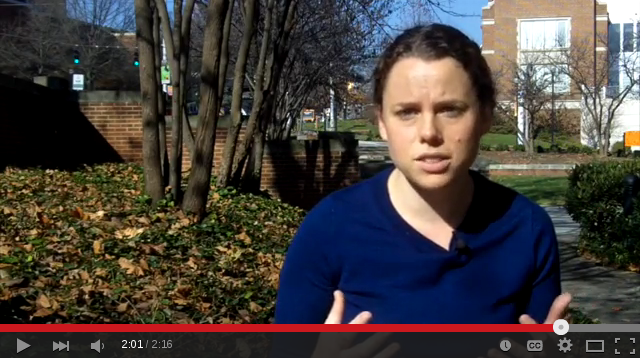Study Reveals Deep Ties between Diverse Tropical Rainforests
January 7, 2016

|
| The consistency found in size structure across tropical rainforests appears to be driven by competition for light among small individual trees following a break in the canopy cover. Photo credit: Caroline Farrior |
KNOXVILLE—Tropical rainforests play a vital role in the well-being of our planet, soaking up carbon dioxide and helping stabilize the global climate. Understanding the science of rainforests—the "lungs" of the planet—is critical to maintaining the fragile balance of Earth's ecosystems.
A study from a team of researchers at the National Institute for Mathematical and Biological Synthesis, Princeton University, and the Smithsonian Tropical Research Institute reveals striking new findings about the structure of tropical rainforests and how the trees in them interact with one another. The study, published today in the journal Science, suggests important new recommendations for how scientists study and model tropical rainforests.
Despite important differences in the climate and species composition of tropical rainforests, tropical rainforests worldwide typically exhibit a consistent size structure. Extensive field work in forest dynamics plots across the tropics has documented this consistency. By mapping and measuring every tree over one centimeter in stem size in plots as large as 100 football fields, the ecologists have noted striking similarities in the patterns of numbers of trees by their size. However, researchers have not yet found a simple biological explanation for the striking pattern.

|
| In this Science Minute from NIMBioS, Dr. Caroline Farrior explains how findings from her new study reveal deep ties between diverse tropical rainforests. Video credit: NIMBioS |
Using data on tree sizes within the tropical forest on Barro Colorado Island in the middle of the Panama Canal, the research team on the new study proposed a new hypothesis for the consistent pattern. Their study verified the mechanism with a mathematical model, finding that the consistent pattern appears to be driven by the trees that lose in competition with other trees for light.
"When a large tree dies, it creates a gap allowing sunlight to hit the forest floor. Then many small trees exposed to the full sun grow quickly until they begin to overtop each other. The unlucky individuals then begin to grow very slowly, effectively stuck at their size when overtopped," explained lead author and NIMBioS postdoctoral fellow Caroline Farrior. "It is the process of competition among trees for light following a gap disturbance that leaves behind a characteristic pattern of tree sizes, explaining the consistency in tree size distributions across otherwise very different tropical forests."
The study's findings have significant implications for how tropical rainforests are modeled. This is especially important now as modelers are trying to predict the sustainability of the tropical forest carbon sink – a service provided by tropical forests that currently slows the rate of atmospheric increase in carbon dioxide by about one-sixth.
"Without reproducing this size distribution for the right reasons, models are likely to get the wrong answer when used to predict into the future," Farrior said.
Citation: Farrior CE, Bohlman SA, Hubbell S, Pacala SW. Dominance of the suppressed: Power-law size structure in tropical forests. Science. [Online]
Media Coverage Highlights
Science Codex:
In rainforests, battle for sunlight shapes forest structure
Princeton Journal Watch:
In rainforests, battle for sunlight shapes forest structure
NSF Science 360:
Study reveals deep ties between diverse tropical rainforests
#
The National Institute for Mathematical and Biological Synthesis is an NSF-supported center that brings together researchers from around the world to collaborate across disciplinary boundaries to investigate solutions to basic and applied problems in the life sciences.
CONTACT:
Caroline Farrior, NIMBioS, +1-865-974-9195, cfarrior@nimbios.org
Catherine Crawley, NIMBioS, +1-865-974-9350, ccrawley@nimbios.org
NIMBioS
1122 Volunteer Blvd., Suite 106
University of Tennessee
Knoxville,
TN 37996-3410
PH: (865) 974-9334
FAX: (865) 974-9461
Contact NIMBioS


